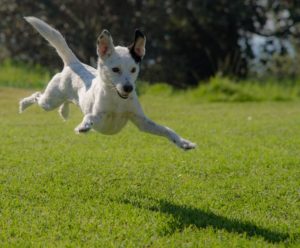Lockdown blues – all the fun’s over?
 Thanks to the Covid-19 lockdown, all non-essential workers have been home with their pets. For dogs, the past seven weeks have been an endless, joyous holiday packed full of companionship, cuddles, games, exercise and treats.
Thanks to the Covid-19 lockdown, all non-essential workers have been home with their pets. For dogs, the past seven weeks have been an endless, joyous holiday packed full of companionship, cuddles, games, exercise and treats.
Through levels 4 and 3 they’ve helped us work from home, helped the kids with their schoolwork, and all of us with those ‘jobs’ about the place. We’ve bonded with our four-legged friends, spending time training, exercising, watching TV and smooching on the couch but with lockdown lifting and the return to work and life in the outside world, they’re going to have to learn to cope with just their own company again.
Return of your dog’s routine
Any disruption to the usual routine, even if it seems like it would be a positive one for us, could cause your pet stress. Their routine is interrupted, and they just don’t know what to expect anymore. Also, being very intuitive, dogs will often pick up on the worry and stress that their humans are feeling.
So, it’s important you set your dog up for success for when lockdown ends. If not, you may find that when normal routines return, Fido won’t be psychologically prepared.
Preventing separation anxiety
Preparing time alone is key to preventing separation anxiety.
Separation anxiety in dogs is like panic in humans. It is fear or anxiety of being left alone and a problem many dogs and dog owners face, but there are things you can do to ensure your dog is happy and content when left alone.
Simple tips to help
Here are some simple tips you can factor into your day to help limit the risk of your best furry friend developing separation anxiety when you get out into the world again.
1. Start leaving Fido in a room alone ….
Start off at a level your dog can cope with, such as 10-15 seconds, gradually building to minutes and eventually a couple of hours. You can do this while you make a cup of tea, get showered, hang out the washing etc.
Vary the time left alone in short bursts throughout your day. Don’t do continuous concurrent increments. Make it variable, with the general idea being you increase the time left alone over time. Take anything out of the room that could be chewed or cause harm to your dog while unsupervised.
2. Give them something to do
Give your mate something to play with in their ‘time out’ room, such as enrichment toys and chew toys, as you increase their ‘me time’. Combing toys with alone time helps build positive association: ‘good things happen when I am left alone’.
3. Normalise being alone
Doing ‘alone time’ in short bursts during the day will help your dog desensitize, but take care to ensure you’re doing this at a pace your dog is comfortable. The goal is to gradually build up the amount of time spent away from your pet, so they feel happy and comfortable when in their own space.
4. Make leaving and returning ‘no big deal’
Keep your comings and goings matter of fact; try and ignore your dog on arrival and departure.
Making a big deal conveys the message that departures are a big deal and only exacerbate your dog’s stress.
If you make a huge fuss of your dog upon walking through the door, the message is that your return is the most important, exciting part of the day. Your dog may therefore spend the day awaiting that exciting return anxiously. Being calm when you return home helps reduce the tension.
A handy trick is to pick up and put down your car keys throughout the day, open and close the door without leaving, put on your jacket and walk around with it and then remove it, pick up and move your shoes and bag.
These simple exercises help reduce the likelihood of separation anxiety when normal life and work routines resume.
Alleviating stress
Your dog continuously following you around the house or sleeping with ‘one eye open’ just in case you are about to leave can be a symptom of separation anxiety that over time can develop into a bigger problem.
Symptoms of stress can include obsessive licking or chewing, digging, barking, aggression, hiding, trembling, whining, pacing, excessive panting, drooling and even diarrhoea.
If you think your dog is starting to show signs of separation anxiety, it may be good to get a check-up with your vet as some signs like urinating indoors, can have several different causes. A vet check will help to identify any underlying health issues, and if necessary, they can help on an on-going basis. There are a number of natural calming remedies for stressed out pets available on the market that your vet will know about.
 Hanging out with mates
Hanging out with mates
One way to help dogs with separation anxiety is to doggie daycare.
To reduce separation anxiety, it is preferable your dog is not left unsupervised for longer than 3 to 5 hours at a time. That’s when dog day care can be a lifesaver, or at the very least, a housesaver.
A fun solution
In dog day care, your dog gets the company of humans and dogs while you’re away. Doggy daycare offers a comfortable, safe, and controlled setting and daycare dogs benefit from physical exercise, supervised socialisation and mental stimulation.
Enroll your dog in day care even if it’s just a day or two a week.
On top of getting a change of scenery, your dog will also get lots of loving attention from fully trained dog lovers from the moment they arrive to the moment they go home again. The job descriptions of our dog carers include cuddling, chucking balls around or playing tug of war. They are there to smooch, preen, entertain and look after your four-legged mate when you can’t.
If you’re looking for a comfortable, safe and secure environment for your dog, call us on 09 299 7415 to ask about doggy day care. Inspections are welcome between 10.00 a.m. and 4.00 p.m. each day and we have both regular and casual daycare places available for your dog.
